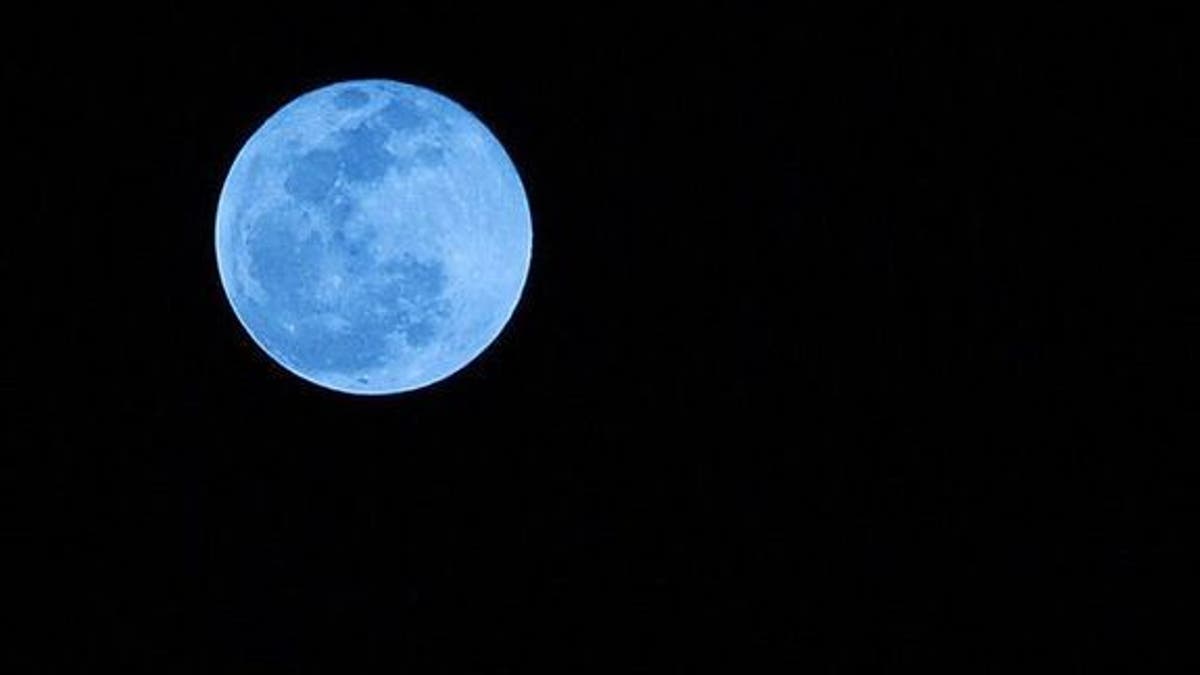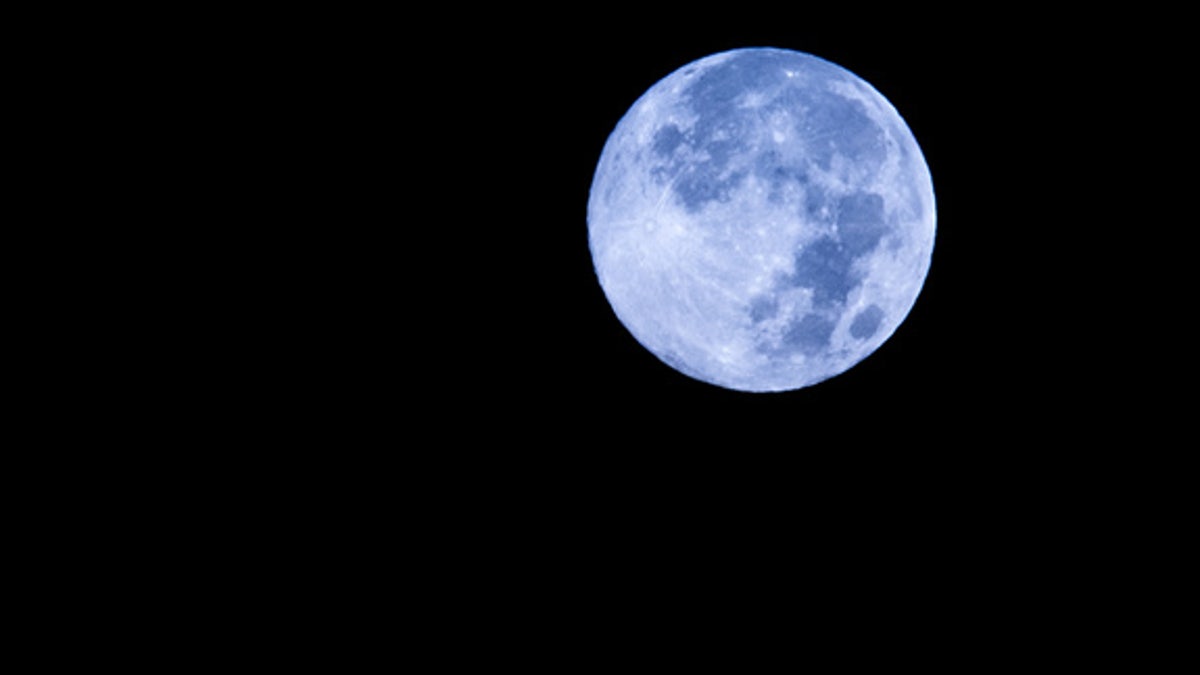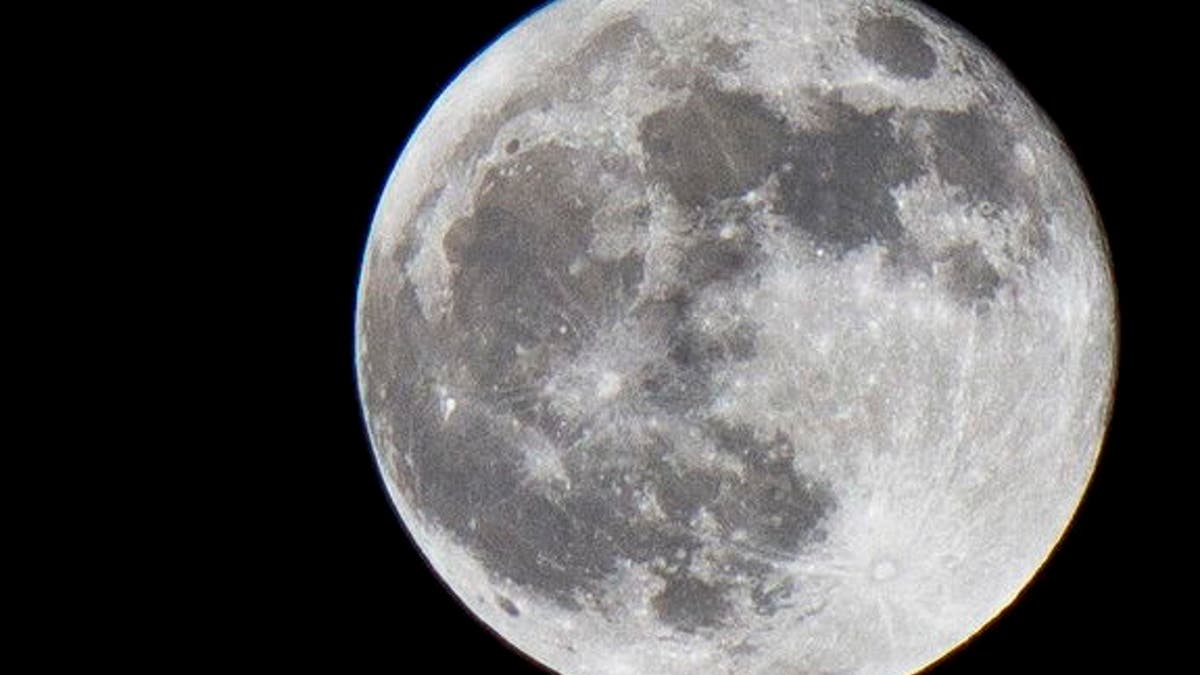
This photo of a blue moon was taken from Boca Raton, Fla., on New Year's Eve 2009. Blue moons aren't actually blue-hued, though that's not to say humans haven't seen blue and even green moons. (HarveNYC | flickr)
Stargazers, get your binoculars ready: a blue moon will grace the sky this weekend, marking the end of what has been a breathtaking month.
A "worm moon" rose on March 1, and a rare parade of planets, including Jupiter, Mars, Saturn, Mercury and Venus along with the bright star Antares, lit the sky from March 7 through March 11.
Now, it's time for the blue moon, also known as a "paschal" moon – the first official moon in spring, to shine.
Here's what you need to know about March's full moons – the "worm moon" and the "blue moon" – and the parade of planets that put on a show during the first week of March.
What is a "blue moon"?

A "blue moon" is the second full moon to appear within the same month. (Tomsajinsa)
The term "blue moon" has been around since the 1940s. The name is simply used to distinct the full moon as the second to appear within a calendar month.
Full moons aren't exactly rare. They occur, on average, every 29.53 days (12.37 times per year), Space.com reported. But to catch a glimpse of one twice in one month is a special treat. It only happens every three years or so.
It's even more special to spot two blue moons in one year.
There's almost always a full moon in February. In fact, the month is only without a full moon every 19 years.
"The last time February didn't have a full moon was in 1999, and the time before that was 1980," Space.com reported. "The next time there will be no full moon in February will be 2037."
Because February only had 28 days, this year's full moon carried over to March, confirming the March 31 full moon would be a "blue" one.
It is possible for the full moon to have a blue hue, but it's not likely.
"Most blue moons look pale gray and white, indistinguishable from any other moon you've ever seen," NASA says. "Squeezing a second full moon into a calendar month doesn't change the physical properties of the moon itself, so the color remains the same."
WATER MAY BE ALL OVER THE MOON, GIVING NEW HOPE FOR SUSTAINED LIFE
When can I see it?
Unlike the "worm moon," the "blue moon" will reach peak fullness early in the morning at approximately 8:37 a.m. ET on March 31.
Don't miss it! The next blue moon won't come around again until October 31, 2020, Space.com reports.
What's a "Planet Parade"?

A parade of planets, including Jupiter, Mars and Saturn was visible from March 4 to March 11. (Photo courtesy of NASA/Newsmakers)
A "Planet Parade" is a celestial event that occurs when a group of planets are visible to the naked eye.
The moon shifts a few degrees each night, giving skywatchers a clear view of a string of planets.
"The Moon will shift along this line of stars and planets, appearing ... near Jupiter on March 7, between Mars and Jupiter, and above the bright star Antares on March 8, near Mars on March 9, between Mars and Saturn on March 10, and near Saturn on March 11," NASA explained earlier this month.
Stargazers in the Northern Hemisphere caught the five planets either during "post-sunset or predawn hours," according to The Weather Channel.
"Jupiter is very bright. It’s brighter than any object in the sky except for Venus, so you’ll have no trouble spotting it after it ascends over your eastern horizon within an hour or so after midnight," EarthSky.org reported at the time. "Red Mars and golden Saturn are much fainter, and they won’t rise until closer to the dawn."
Venus and Mercury were easy to spot right after sunset between March 18 and March 20.
"Venus will act as your guide to Mercury, because it’s about 12 times brighter than Mercury now," EarthSky.org explained. "These two worlds are now very near each other on the sky’s dome."
At the end of the month, when the "blue moon" rises, Saturn and Mars will appear together.
SUPER BLUE BLOOD MOON IN STUNNING PICTURES
What is a "worm moon"?

A full moon, nicknamed the "worm moon," graced the night's sky earlier this month. (Sergio Estupiñán Vesga)
The March 1 moon was dubbed the "worm moon" by the Old Farmer's Almanac in the 1930s because it's a sign spring is finally arriving.
It was named "worm moon" after "earthworm casts that appear as the ground thaws," NASA wrote in a post online.
Southerners are more likely to use the term because they have an abundance of earthworms, unlike the northern part of the U.S.
"When glaciers covered the northern part of North America they wiped out the native earthworms," NASA explained. "These glaciers melted about 12,000 years ago and the forests grew back without earthworms."
While "worm moon" is the moon's most popular nickname, there are several other names for the last full moon of winter, including: the sugar moon, crow moon, crust moon and the corn moon.




















